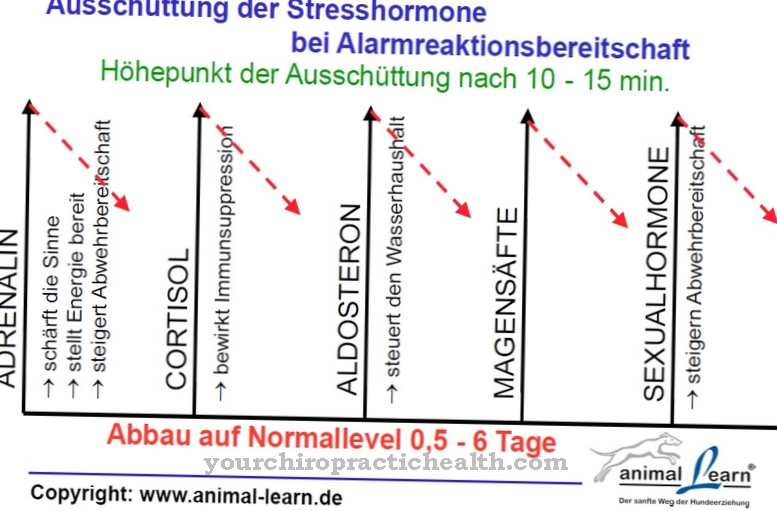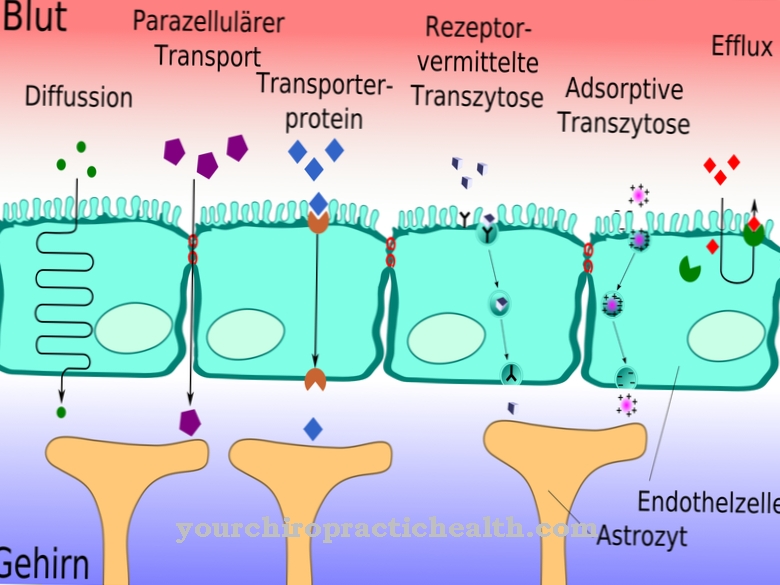The Pituitary gland, in German Pituitary gland, is a hormonal gland about the size of a hazelnut kernel, located at the level of the nose and ears in the middle fossa. It works closely with the hypothalamus and, similar to an interface between the brain and physical processes, controls the release of vital hormones that, among other things, Influence metabolism, growth and reproduction.
What is the pituitary gland?

The name hypophysis is derived from the ancient Greek term hypóphysis and literally means: the lower / below attached plant. This describes their position quite well. Because the pituitary gland "hangs" under the brain. The pituitary gland, in Latin Glandula pituitaria, is of very central importance in the hormonal balance and in its central control.
It is only about 1 cm tall and one gram “heavy”, the greater its influence on the endocrine system (hormone system) of the body. Together with the hypothalamus, with which it is connected and forms a functional unit, it plays an important role in the release of a wide variety of hormones. In addition, the pituitary gland is the only part within the brain where the blood-brain barrier can be bypassed.
This is a protection of the central nervous system against substances that are not allowed to penetrate the brain substance: As a barrier that is only partially permeable, the blood-brain barrier regulates the selective exchange of substances. This allows the hormones that are formed in the brain or in the hypothalamus to reach the bloodstream via the pituitary gland.
In this way, the pituitary gland (together with the hypothalamus) provides a connection between the nervous and endocrine systems of the body and thus connects and coordinates the communication systems in the human body.
Anatomy & structure
The pituitary gland is located at the base of the skull, approximately at the level of the eyes and ears. It sits in the so-called pituitary box and hangs like a drop below the hypothalamus, to which it is connected by the pituitary stalk. The bone structure in which the pituitary gland is embedded is known as the Turkish saddle.
The pituitary gland, together with the hypothalamus, forms a functional unit that connects the two vital communication systems in the human body: the nervous system and the endocrine system are regulated by the central control unit of the endocrine system, the hypothalamus and the pituitary gland connected to it. This consists of several parts that differ from each other not only functionally, but also in terms of developmental history and thus histologically (regarding the cell type):
The anterior pituitary lobe (also called adenohypophysis) is the older part in terms of evolution and contains different hormone-producing gland cells. The posterior lobe of the pituitary gland (also known as the neurohypophysis) consists mainly of nerve cell processes, the so-called axomes.
There is also the interstitial lobe of the pituitary. While the anterior pituitary lobe arises from the Rathke pouch, a continuation of the so-called roof of the pharynx, the posterior pituitary lobe, strictly speaking, belongs to the diencephalon. The big difference is that the adenohypophysis, controlled by the hypothalamus, produces hormones itself, while the neurohypophysis is solely responsible as a storage and release / secretion organ for the effect hormones oxytocin and ADH generated in the hypothalamus.
Function & tasks
The pituitary gland therefore represents a kind of interface and is unique in its function. Because it is the only part in the brain that is not subject to the blood-brain barrier, it is also of great importance: It is up to it to release the effect hormones formed in the adenohypophysis, but also those produced in the hypothalamus, into the general bloodstream .
The adenohypophysis or the anterior lobe of the pituitary gland itself produces a large amount of hormones. A distinction is made between hormones that have a direct effect on their target organs (the so-called non-glandotropic hormones) and glandotropic hormones, which stimulate the production of hormone-producing glands downstream. The hormones that have a direct effect on the target organ include somatropin (STH for short, growth hormone) and prolactin (which regulates the flow of milk, among other things).
The second group, the glandotropic hormones, includes the follicle-stimulating hormone (FSH for short) and the luteinizing hormone (LH), both of which belong to the "gonadotropic" hormones that affect the gonads. In addition, the anterior pituitary lobe forms other glandotropic (and "non-gonadotropic", i.e. not affecting the germ cells) hormones, such as the thyroid-stimulating hormone (TSH for short; stimulates the thyroid gland) and the adrenocorticotropic hormone (ACTH for short).
Furthermore, lipotropin (LPH), beta-endorphin and met-enkephalin are produced in the anterior pituitary gland. In the pituitary lobe, i.a. the melanocyte-stimulating hormones or melanotropins (MSH for short) are formed. The hypothalamus controls and regulates the entire hormone production of the pituitary gland with the help of statins and liberins. In the neurohypophysis (posterior lobe of the pituitary gland), on the other hand, the hormone oxytocin formed in the hypothalamus and the antidiuretic hormone (ADH for short) are stored and released.
Illnesses & ailments
Diseases of the pituitary gland are by no means uncommon. Depending on the examination method and age, pathological pituitary changes can be found in around 10-25% of the population. Most of them, however, have no symptoms and do not require any therapy.
For the exact diagnosis, extensive hormonal and usually very complex dynamic test procedures are necessary, especially since many hormones also depend on numerous other factors (such as time of day, stress, etc.). In principle, the posterior or anterior pituitary gland can become over or underactive, with normal or impaired hormonal function. Especially the hormone-producing parts of the pituitary gland can develop a functional failure or an underfunction (pituitary insufficiency and panhypopituitarism), but also overfunction.
The latter usually in the form of a tumor that results in an excess of hormones. In this so-called pituitary adenoma, e.g. Increased secretion of the growth hormone somatotropin, which physically manifests as acromegaly: excessive growth, especially of the legs and arms. A consequence of the pituitary adenoma and hypopituitarism (i.e., overproduction of hormones by the pituitary gland) can also lead to increased production of ACTH and Cushing's disease.
This shows massive disturbances of the water balance and the typical picture of severe edema formation in the face and body. However, it is not only the direct physical effects of hormonal overproduction in a pituitary adenoma that can lead to serious illnesses. These are only two possible physical effects, as the pituitary gland influences numerous endocrinological and organic processes and thus other diseases (such as those of the thyroid gland, adrenal glands, etc.) result from pathological changes in the pituitary gland.
For this reason, the symptoms in the course of diseases of the pituitary gland are also extremely different and a medical and diagnostic challenge. The enlargement of the pituitary gland can also become a space displacement problem. The pressure on the visual and facial nerves can cause severe eye muscle paralysis and visual field defects.
There is a considerable risk of permanent damage here, which is why the tumor must be surgically removed, often through the nose. In addition to extensive hormonal examinations, further differential diagnostic clarification can often also be carried out using imaging methods (brain computed tomography, magnetic resonance therapy and somatostatin receptor scintigraphy).

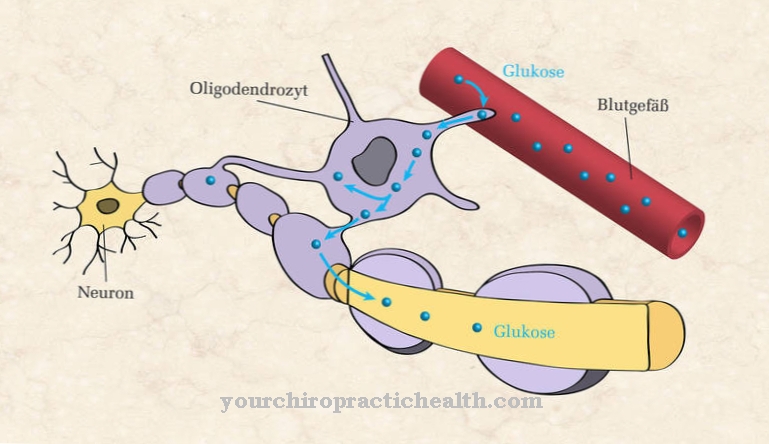


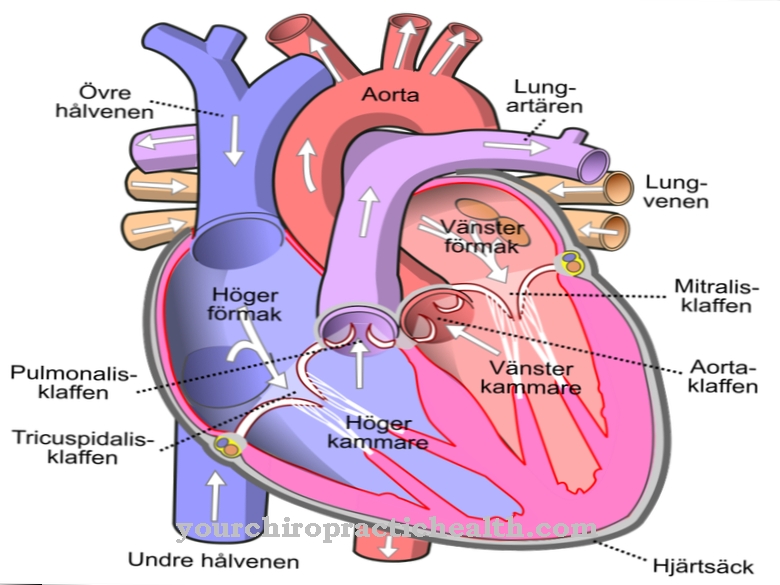
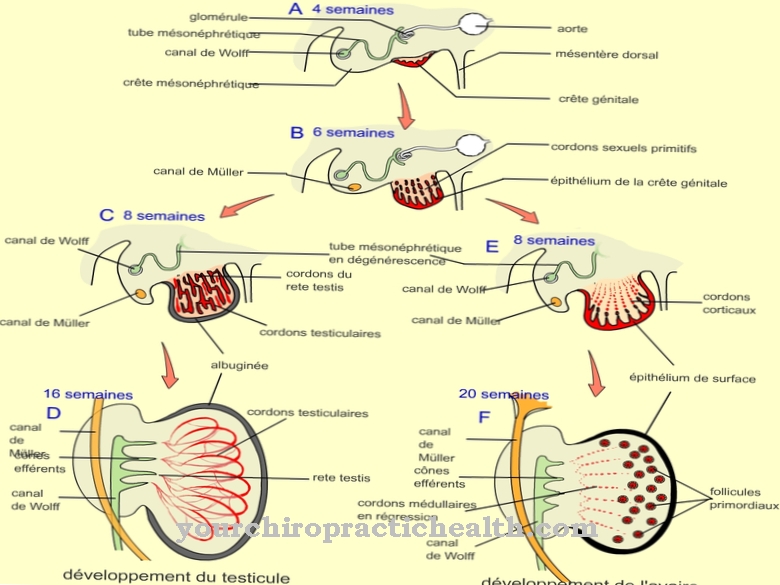
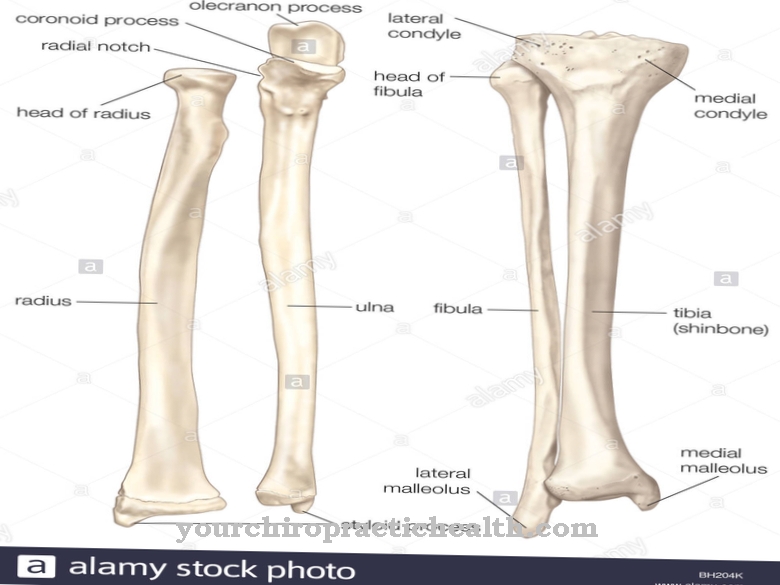

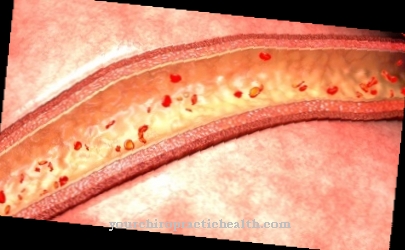
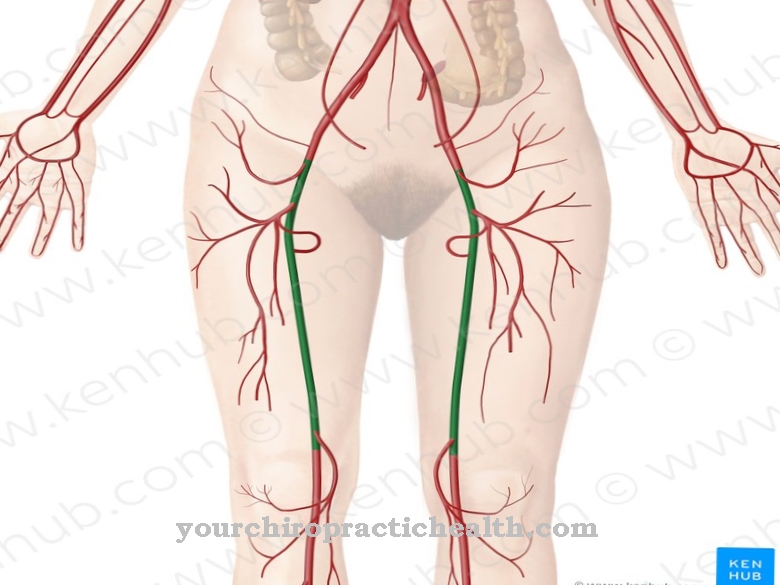


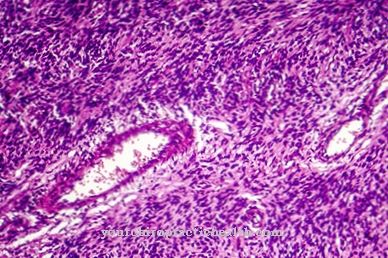



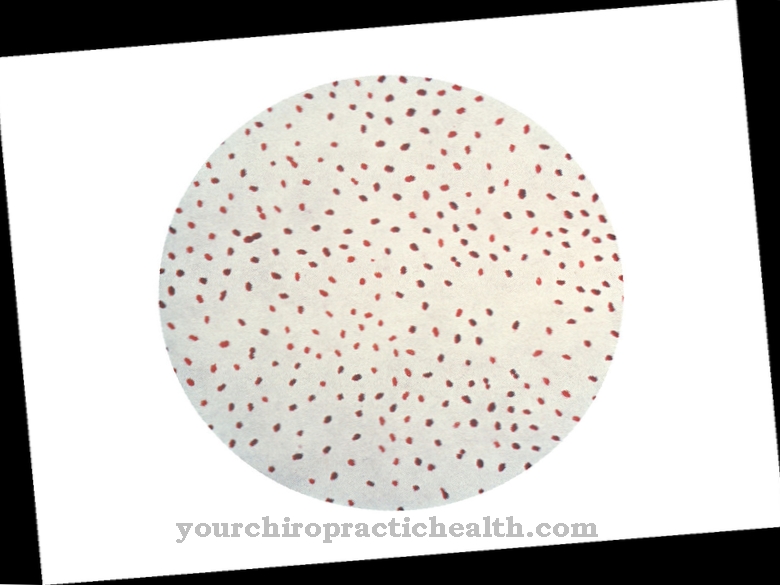



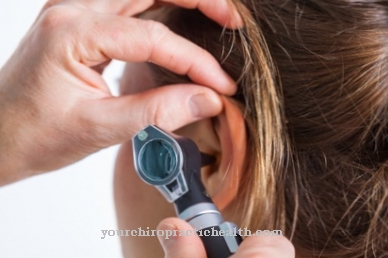


.jpg)
